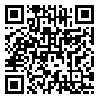Thu, Jan 1, 2026
Volume 16, Issue 1 (Winter 2026)
PTJ 2026, 16(1): 15-24 |
Back to browse issues page
Download citation:
BibTeX | RIS | EndNote | Medlars | ProCite | Reference Manager | RefWorks
Send citation to:



BibTeX | RIS | EndNote | Medlars | ProCite | Reference Manager | RefWorks
Send citation to:
Mohammadi H, Omidi M R, Fakhraei Rad N. Impact of Supportive Taping on Performance in Fatigue Conditions: A Study on Professional Basketball Players With Flat Feet. PTJ 2026; 16 (1) :15-24
URL: http://ptj.uswr.ac.ir/article-1-691-en.html
URL: http://ptj.uswr.ac.ir/article-1-691-en.html
1- Department of Physical Education and Sport Sciences, Faculty of Humanity Sciences, University of Kurdistan, Sanandaj, Iran.
2- Department of Human Movement and Nutrition Sciences, School of Health and Rehabilitation Sciences, The University of Queensland, Brisbane, Australia.
2- Department of Human Movement and Nutrition Sciences, School of Health and Rehabilitation Sciences, The University of Queensland, Brisbane, Australia.
Abstract: (1303 Views)
Purpose: This study examined how low-dye tape and navicular sling kinesiotape impacts athletic performance in fatigue conditions in basketball athletes with flat feet.
Methods: The current research was conducted on 12 professional basketball players aged 18 to 25 years with flat feet. The Staheli Index, Y Balance test, 20-meter speed test, modified t-test, and Sargent test were employed to assess flat feet, dynamic balance, speed, agility, and power. A basketball-specific performance fatigue protocol was used to induce performance fatigue, and treatments included low-dye taping and navicular sling kinesiotape.
Results: Statistical analysis indicated that low-dye taping significantly improved dynamic balance in both fatigued (P=0.01) and non-fatigued (P=0.01) conditions (F=18.33). Additionally, performance fatigue negatively affected dynamic balance in both low-dye taping and non-taping conditions (P=0.01). It also led to impaired performance in the 20-meter speed test in the low-dye and Kinesiotape conditions (0.49 and 0.60), as well as a 3.75 cm reduction in the Sargent test in the non-taping condition. Additionally, the low-dye taping condition led to a 0.68-second decrease in agility performance.
Conclusion: While fatigue did have an impact on performance, low-dye taping, and Navicular Sling Kinesiotape resulted in a smaller performance decline compared to non-taping conditions. In addition, low-dye taping had a greater effect on performance and flat foot than Navicular Sling Kinesiotape. It is recommended that basketball players with flat feet use low-dye taping and Navicular Sling Kinesiotape.
Methods: The current research was conducted on 12 professional basketball players aged 18 to 25 years with flat feet. The Staheli Index, Y Balance test, 20-meter speed test, modified t-test, and Sargent test were employed to assess flat feet, dynamic balance, speed, agility, and power. A basketball-specific performance fatigue protocol was used to induce performance fatigue, and treatments included low-dye taping and navicular sling kinesiotape.
Results: Statistical analysis indicated that low-dye taping significantly improved dynamic balance in both fatigued (P=0.01) and non-fatigued (P=0.01) conditions (F=18.33). Additionally, performance fatigue negatively affected dynamic balance in both low-dye taping and non-taping conditions (P=0.01). It also led to impaired performance in the 20-meter speed test in the low-dye and Kinesiotape conditions (0.49 and 0.60), as well as a 3.75 cm reduction in the Sargent test in the non-taping condition. Additionally, the low-dye taping condition led to a 0.68-second decrease in agility performance.
Conclusion: While fatigue did have an impact on performance, low-dye taping, and Navicular Sling Kinesiotape resulted in a smaller performance decline compared to non-taping conditions. In addition, low-dye taping had a greater effect on performance and flat foot than Navicular Sling Kinesiotape. It is recommended that basketball players with flat feet use low-dye taping and Navicular Sling Kinesiotape.
Type of Study: Research |
Subject:
Sport injury and corrective exercises
Received: 2025/06/12 | Accepted: 2025/10/7 | Published: 2026/01/1
Received: 2025/06/12 | Accepted: 2025/10/7 | Published: 2026/01/1
Send email to the article author
| Rights and permissions | |
 |
This work is licensed under a Creative Commons Attribution-NonCommercial 4.0 International License. |






